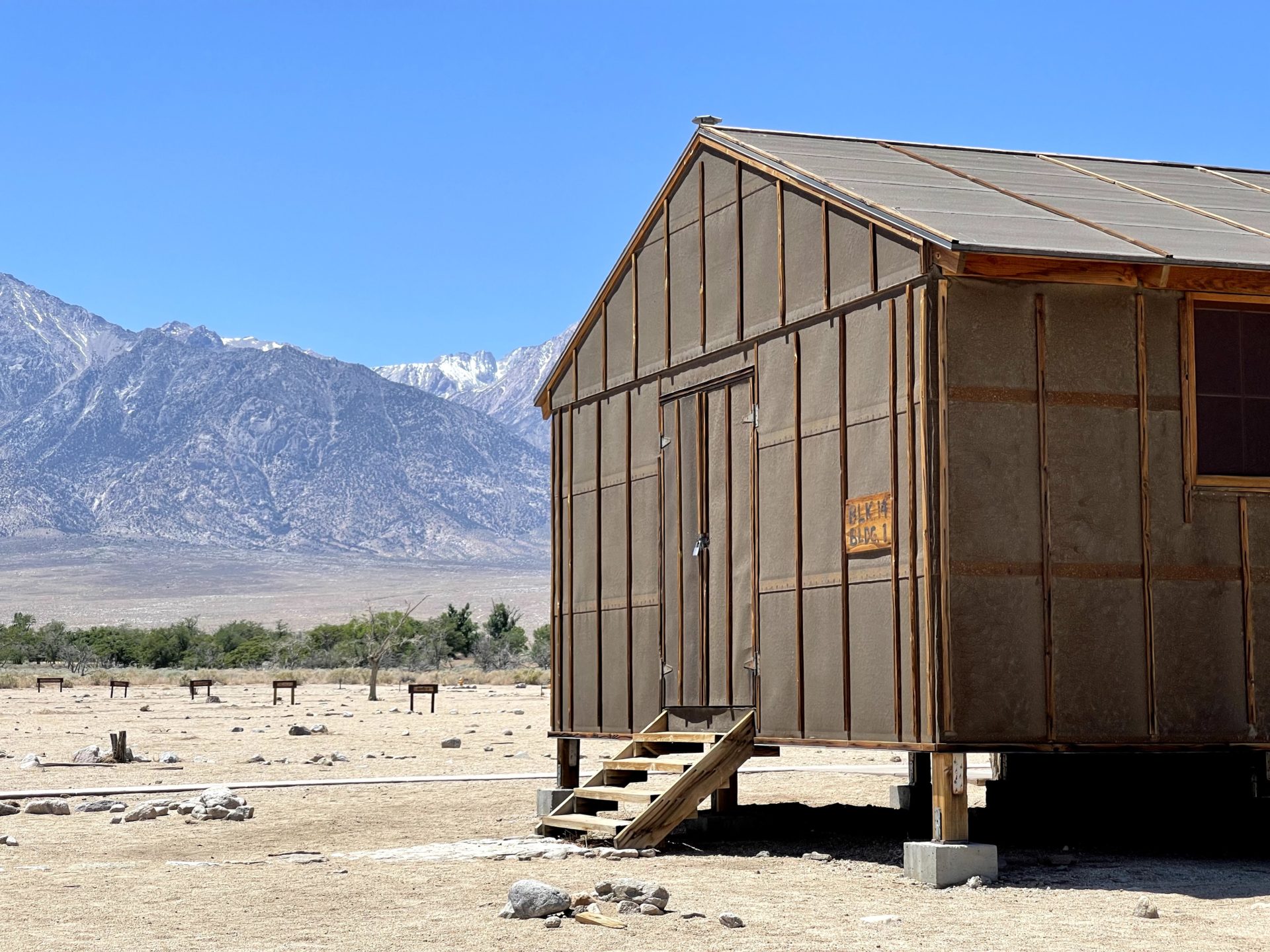This article has partner links that I may receive compensation from at no cost to you. Thank you for supporting my site by using them!
U.S. 395 travels north & south through the desolate Owens Valley of Eastern California. The imposing snow-capped mountains of the Sierra Nevada tower to the west. It is here in this beautiful landscape that one of the ugliest incidents of American history took place. During World War II, thousands of Japanese-Americans were taken from their homes and sent to concentration camps. The first and one of the largest of these camps was located in Manzanar, California, near the ironically-named Independence. Manzanar is now a National Historic Site with reconstructed buildings as well as a visitor center and a self-guided driving tour of the grounds.
Getting to Manzanar National Historic Site
Manzanar is located just off U.S. 395, a few miles south of Independence, and about 45 minutes south of Bishop. From Los Angeles, it is about a 3.5-hour drive. The Manzanar National Historic Site (official website) can be easily seen from the road, and it is well-signposted. There is also a looming watchtower out front.


Despite the ease of access, few people who drive along this highway stop at the Manzanar camp. I spent about an hour there & only saw 2 or 3 other cars. It’s truly a shame, as more people should be aware of this dark history so it is never repeated.
History of the Manzanar Concentration Camp
Following the Japanese attack on Pearl Harbor, the United States government led by President Franklin D. Roosevelt responded with Executive Order 9066, which was issued on February 19, 1942. This order allowed for military exclusion zones “from which any or all persons may be excluded.” Subsequent orders led to the creation of ten concentration camps that held around 120,000 forcibly relocated people of Japanese ancestry, including U.S. citizens. Those who were sent to Manzanar & other similar camps lost nearly everything they had, including their businesses & land. They could only bring small amounts of possessions they could carry.
The official name of Manzanar was the Manzanar War Relocation Center, and it was also referred to as the Manzanar Internment Camp. Despite political efforts to use euphemistic language & legalese by calling these facilities Japanese internment camps, make no mistake about it, places such as Manzanar were concentration camps. Merriam-Webster defines a concentration camp as “a place where large numbers of people (such as prisoners of war, political prisoners, refugees, or the members of an ethnic or religious minority) are detained or confined under armed guard.” While the term may now be more strongly associated with places like Auschwitz & Dachau, Manzanar also meets the definition.
Those who were imprisoned here were forced to live in a place that was much different from anywhere else they had lived. Most came from West Coast cities such as Los Angeles & San Francisco. Not only is Manzanar far from any large cities, but it is also subjected to hot summers, cold winters, and winds sweeping down from the mountains.

While the Japanese people imprisoned at Manzanar from 1942 to 1945 were not allowed to go beyond the barbed wire fences, they did have some semblance of regular life. The detainees were allowed some self-government. They produced items for the war effort. Children went to schools & sports teams were formed. There was a newspaper & a library. Of course, this all happened underneath the dark cloud of “Americanization” programs & loyalty questionnaires.
At the visitor center, you can watch a 22-minute film about the camp called “Remembering Manzanar”. For those who are unable to make it to Manzanar or would like to watch the film before their visit, you can find it below.
This article & podcast from 99% Invisible does an excellent job of detailing the history of Manzanar, including its subsequent preservation & recognition as an important historic site. The included photos from photographers Dorothea Lange & Ansel Adams helped document this history.
Manzanar Driving Tour
After learning more about Manzanar at the visitor center, which is housed in the former Manzanar High School Auditorium, it’s then time to explore the grounds. While the Manzanar camp is somewhat walkable, it does cover a fairly large area. You can instead drive to points of interest & go on a short walk at each.
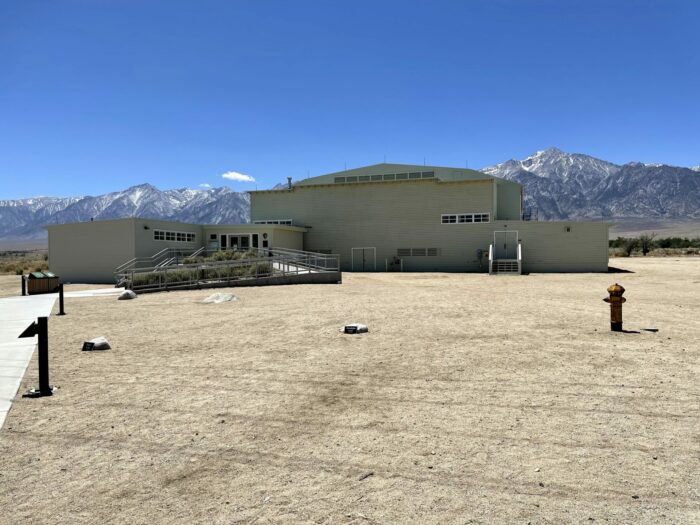
In the areas closest to the main parking lot, you’ll find reconstructed buildings from the time of the Manzanar internment camp. Elsewhere, only building foundations remain. There were 36 blocks, each with 14 barracks buildings. The reconstruction of Block 14 includes barracks, a mess hall, a women’s latrine, and the fire station.
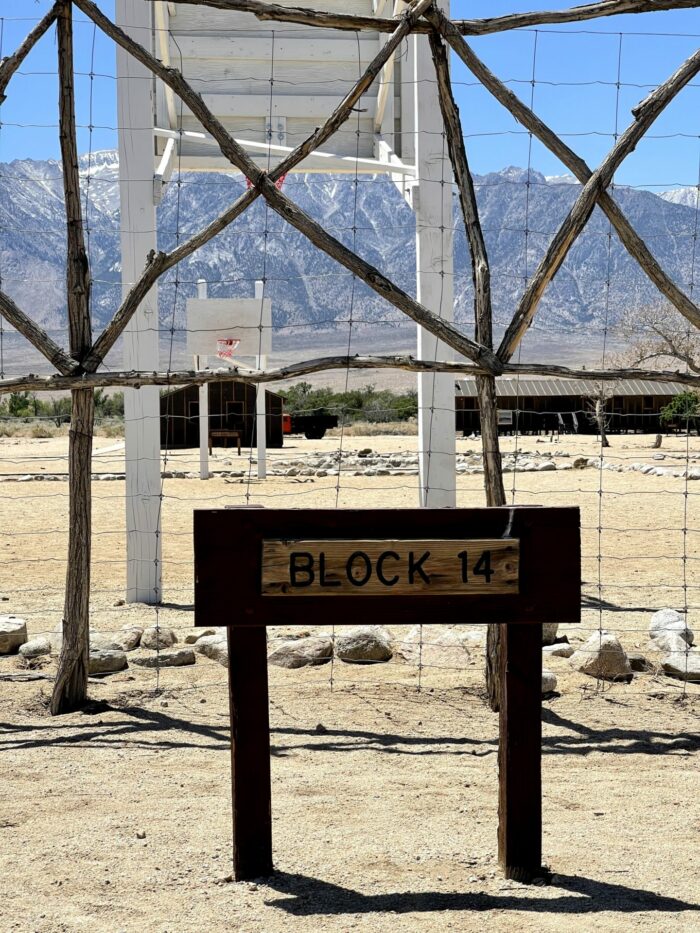
The Manzanar driving tour then continues deeper into the land, where you can still see the remains of parks & orchards that were planted by the imprisoned Japanese. The trees stand tall to this day.
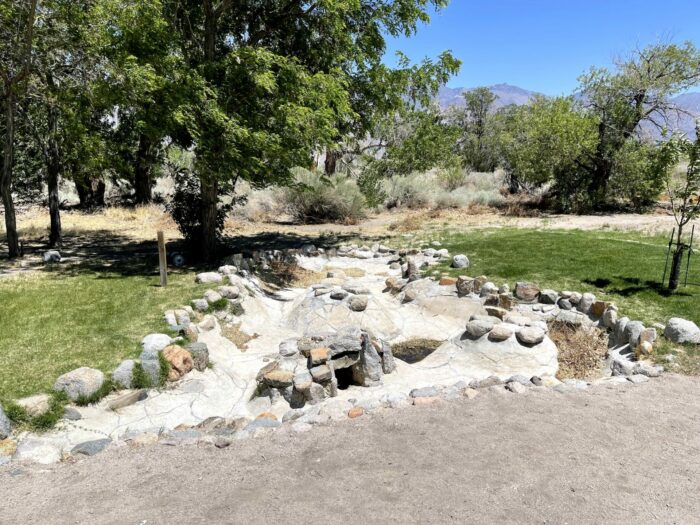
In the face of this terrible situation, those who lived here still did everything they could to make the place feel like home. These Japanese gardens have been restored to at least some degree of what they once looked like. At one point, over 100 such gardens dotted the Manzanar grounds.
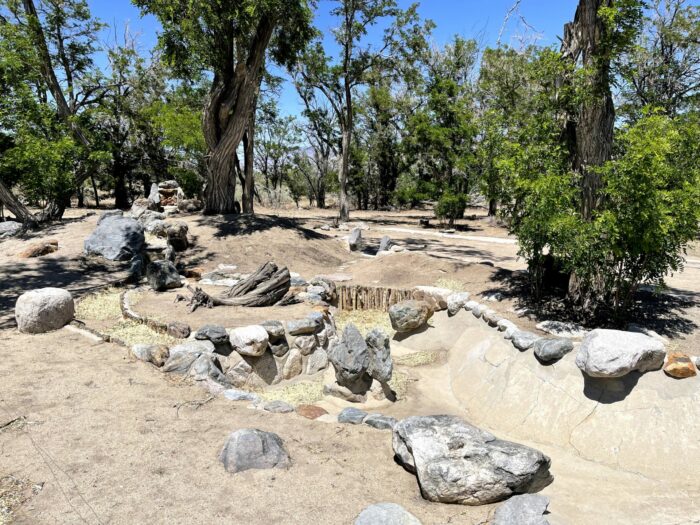
At the edge of Manzanar is the cemetery, which includes a monument. The monument reads “Soul Consoling Tower”. Here is where those who lost their lives at Manzanar were buried & memorialized. In the Japanese tradition, paper cranes are still placed here to this day. While the Manzanar concentration camp was not a death camp, it’s important to remember that over 100 people still died here, people who should have died free.
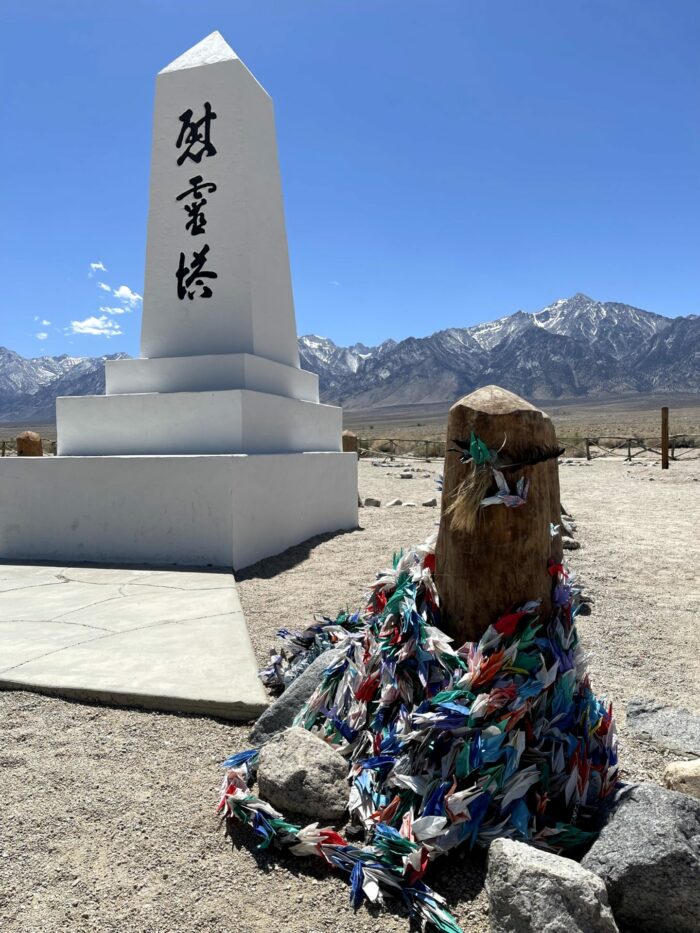
The background of the Sierra Nevada behind the cemetery is dramatic. Here it feels like you are at the end of the world, which was the case for those who were imprisoned here & could not go further.
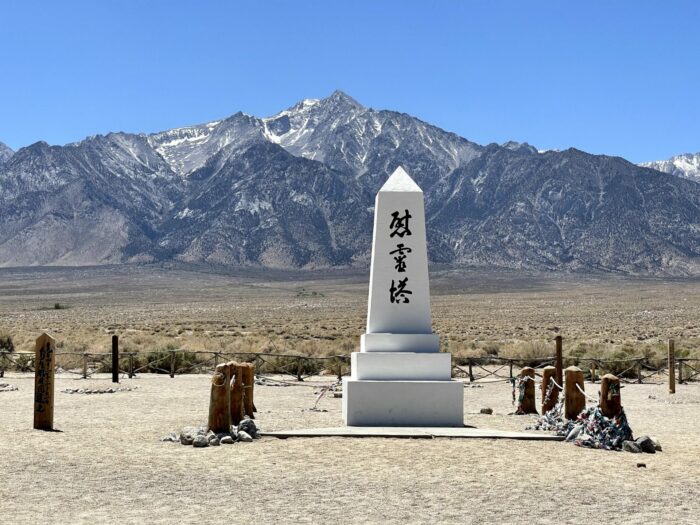
Then the Manzanar driving tour heads back toward 395 and the exit. Just before that is the administration center & sentry post.
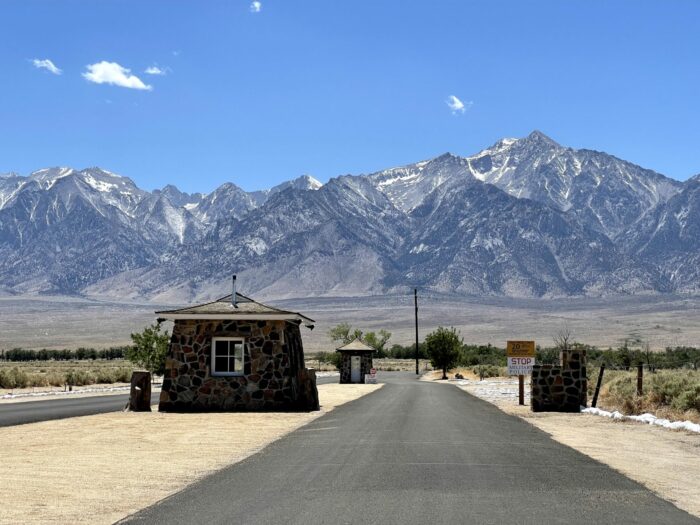
It was in this area where one of the darkest incidents of the Manzanar internment camp took place on December 6, 1942, almost exactly one year after Pearl Harbor. On this day, hundreds of Japanese prisoners demanded the release of Harry Ueno, who had been arrested for taking part in the beating of Fred Tayama, a Japanese American Citizens League leader & suspected FBI informant. Their peaceful protest & subsequent attempt to free Ueno was eventually met with a panicked reaction by MPs, who fired tear gas into the crowd. In the ensuing chaos, soldiers shot and killed James Ito & James Kanagawa while also injuring others.

As with all history, there are multiple sides to every story. In this section of Manzanar, the perspective from all sides is presented. This lets visitors draw their own conclusions based on everything they have learned from their visit.
A visit to Manzanar is one that sticks with you from the moment of your arrival as you are hit with the gravity of this place. There is an unshakeable notion that this history is not just the past, it is our present. That nowadays, the United States is still struggling with anti-Asian racism (as well as racism against many other minority groups). I was moved to tears as I read this historical marker, which sadly still remains relevant today as hate crimes against Asians are on the rise.
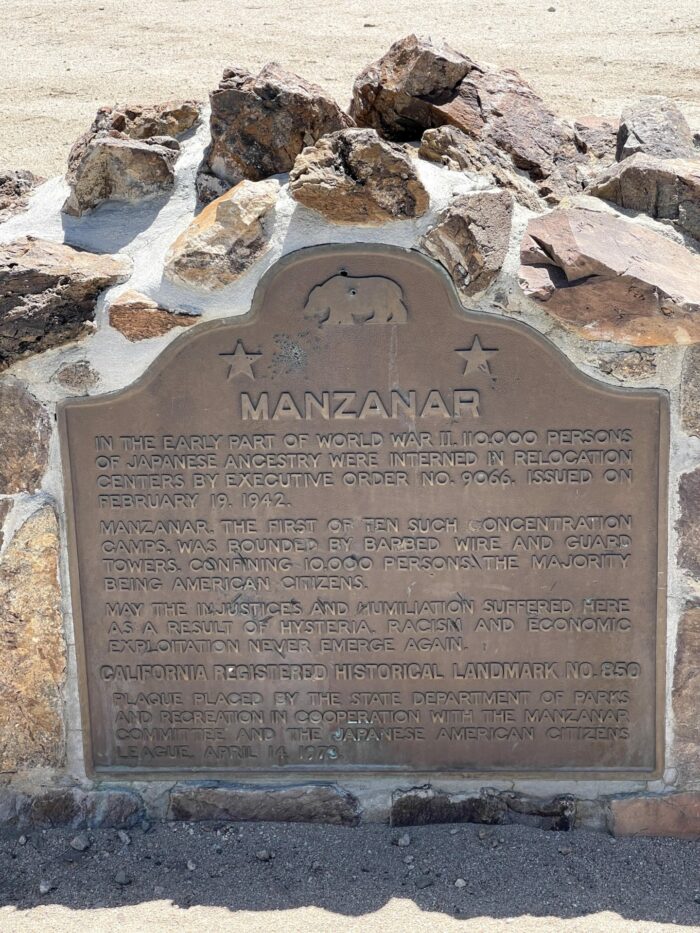
May the injustices and humiliation suffered here as a result of hysteria, racism, and economic exploitation never emerge again.
If you’re on a road trip & making your way along Highway 395, I also recommend stopping at the Eastern California Museum, which has a detailed exhibit about Manzanar. The Ancient Bristlecone Pine Forest is worth a detour. Bishop is also a nice town with some great craft beer spots.
Here are some other things to see & do near Bishop.
If you’re looking for a place to stay in Bishop, check out these nearby hotels.

